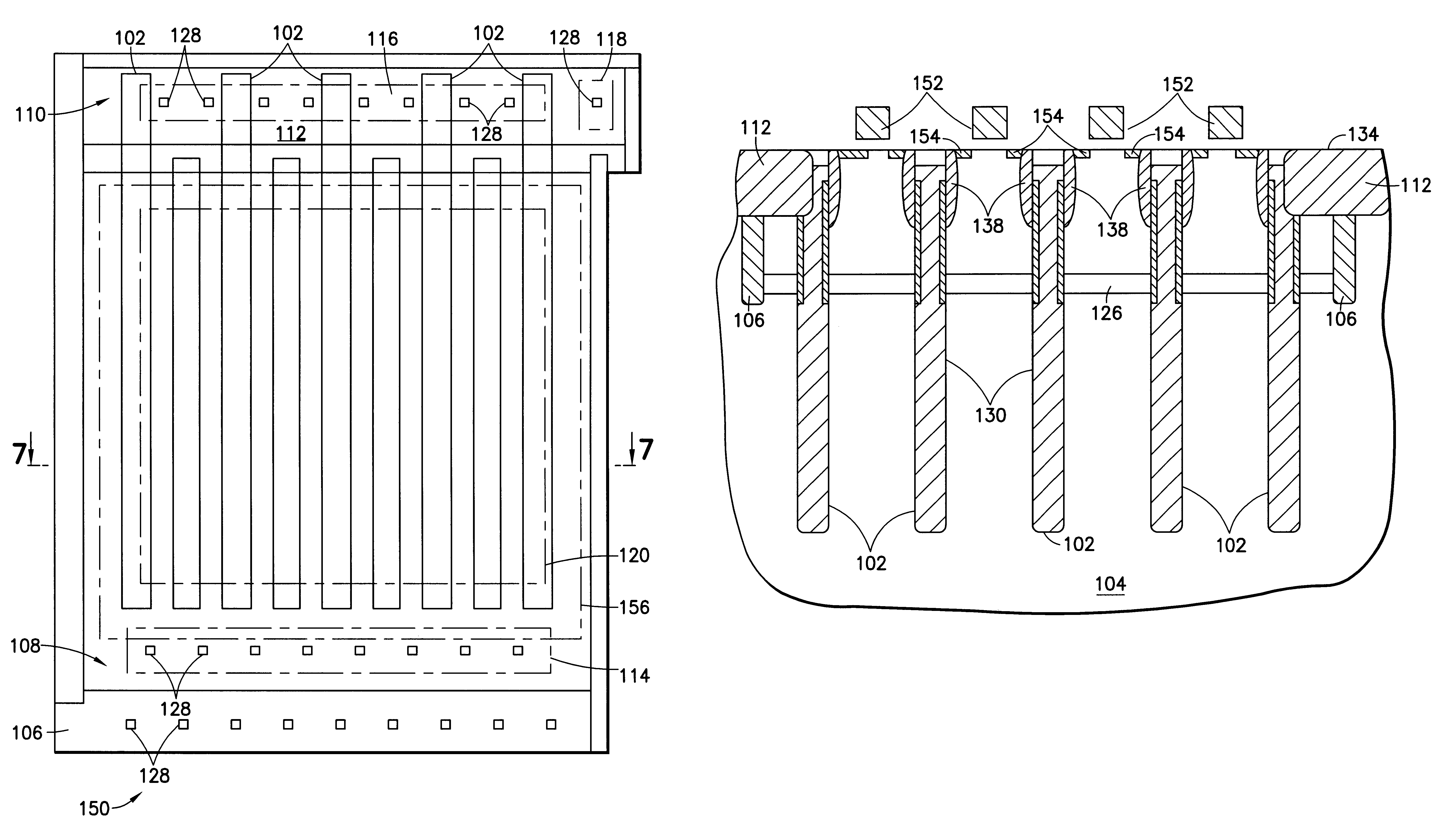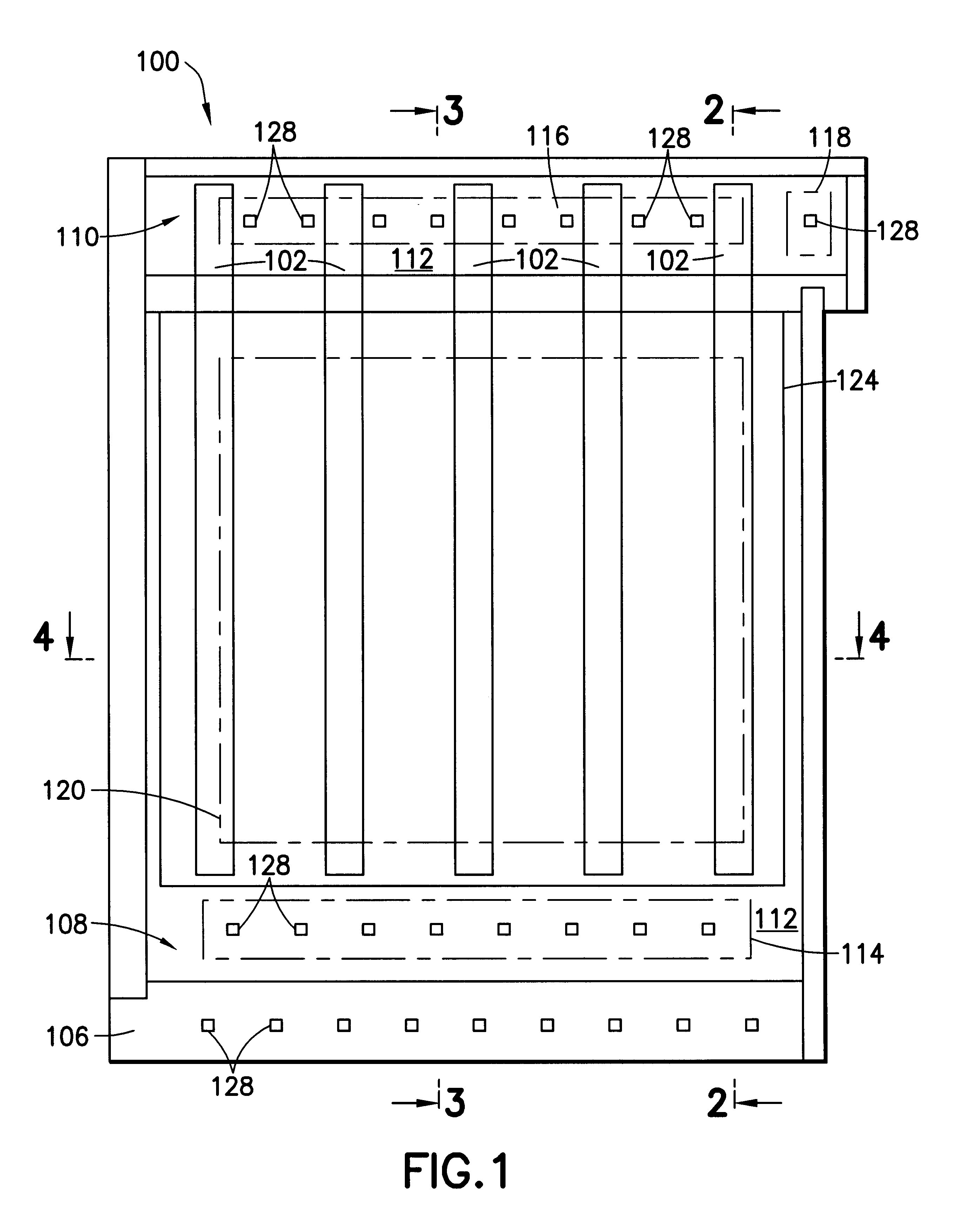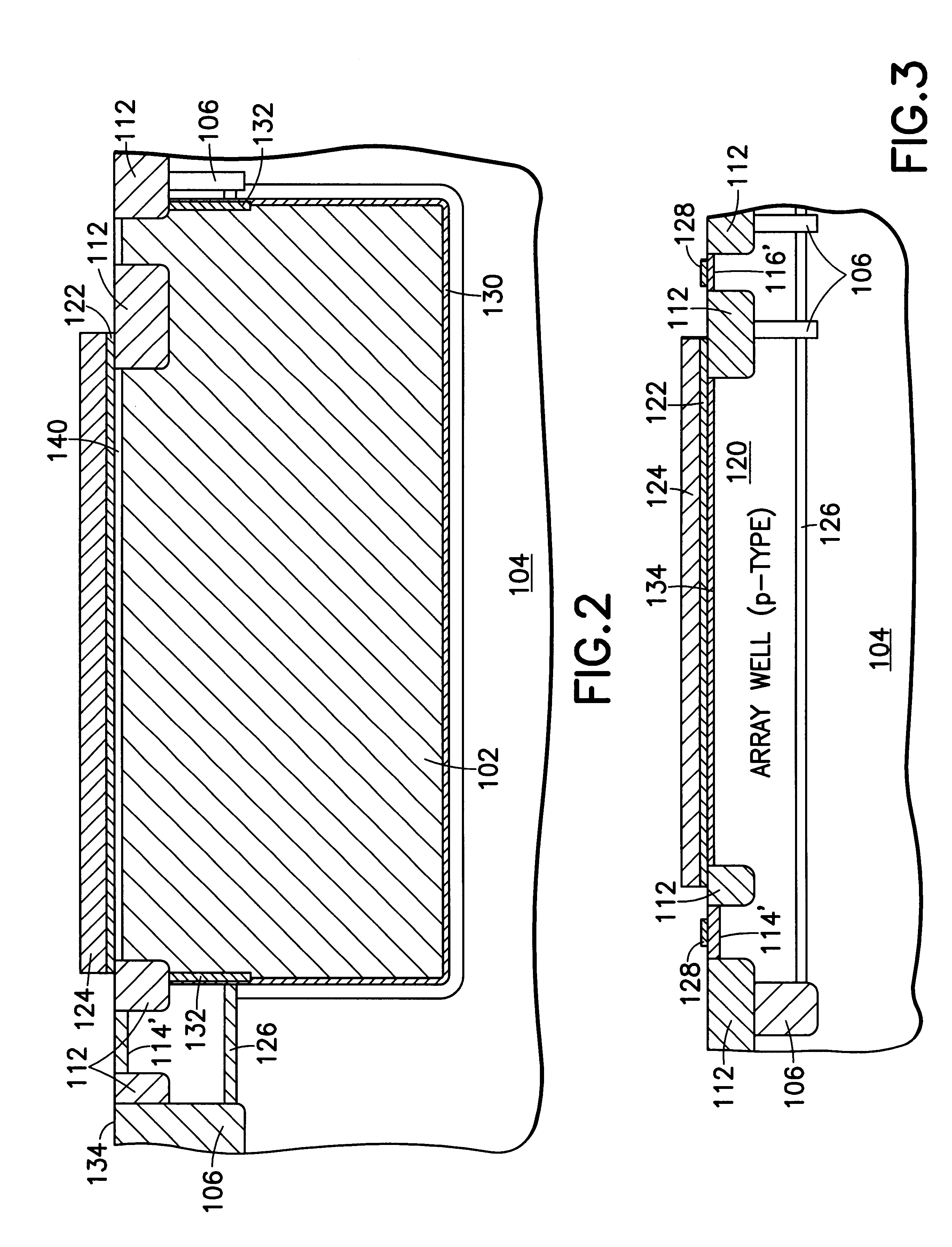DRAM cell buried strap leakage measurement structure and method
a leakage measurement and buried strap technology, applied in semiconductor/solid-state device testing/measurement, instruments, transistors, etc., can solve the problems of reducing stored charge, reducing charge, and reducing the dram's sensitivity to noise, so as to reduce the dram's leakage rate, and the leakage rate is high
- Summary
- Abstract
- Description
- Claims
- Application Information
AI Technical Summary
Problems solved by technology
Method used
Image
Examples
Embodiment Construction
Referring now to the drawings, and more particularly, FIG. 1 shows a plan view of a first buried strap test structure 100 of the preferred embodiment cell leakage test structure of the present invention. The preferred embodiment cell leakage test structure includes two (2) buried strap test structures, an isolated buried strap test structure 100 of FIG. 1 and, a second structure wherein the buried straps are connected to source diffusions as described hereinbelow. Thus, the first test structure 100 includes a large isolated strap junction area for isolating and determining strap diffusion leakage. FIG. 2 is a cross-section of the first test structure 100 of FIG. 1 through 2--2. FIG. 3 is a cross-section of the first test structure 100 of FIG. 1 through 3--3. FIG. 4 is a cross-section of the first test structure 100 of FIG. 1 through 4--4.
It should be noted that the strap is described herein as n-type for example only and not as a limitation. The present invention may be used advanta...
PUM
 Login to View More
Login to View More Abstract
Description
Claims
Application Information
 Login to View More
Login to View More - R&D
- Intellectual Property
- Life Sciences
- Materials
- Tech Scout
- Unparalleled Data Quality
- Higher Quality Content
- 60% Fewer Hallucinations
Browse by: Latest US Patents, China's latest patents, Technical Efficacy Thesaurus, Application Domain, Technology Topic, Popular Technical Reports.
© 2025 PatSnap. All rights reserved.Legal|Privacy policy|Modern Slavery Act Transparency Statement|Sitemap|About US| Contact US: help@patsnap.com



